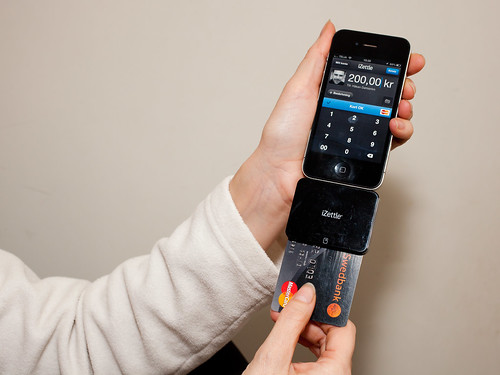-
Are mobile payment apps more than just taking the same money a different way?
0 June 25th, 2013ecommerce, mobile, mobile applications
June 25th, 2013ecommerce, mobile, mobile applicationsWhereas back in the olden days, people used to barter with cattle and corn, times swiftly moved on. Cash replaced cattle, cheques came (and some say went), then credit cards brought us up to date.
While contactless and mobile app payments are still considered ‘alternative’ by many, their use last year doubled from the previous year. According to the British Retail Consortium these new technologies made up about one in twenty retail sales in the UK. The numbers are still low, but given all of the transactions that occur in the UK, the numbers show a definite foothold, especially given that the use of cash fell by 10% compared to 2011.

Image source
Paypal is not only the most widely recognised ‘non-bank’ payment method, but the one leading the charge in building up acceptance to new ways of thinking about payments. June sees their first TV ads in the UK to convince consumers that they can use Paypal for things other than eBay. It’s already been adopted by several larger companies, including Domino’s Pizza so that buyers don’t have to enter their bank details repeatedly over different websites.
The real excitement is starting to build up around purchases away from sofa-shoppers and out in the real world. While many CFOs may become almost giddy about the ability to sell online at 2am by one simple password and zero staffing costs, it’s actually shaping up to be much more than that. It’s not just about avoiding the long card-entering process which may give the consumer time for second thoughts, payments by mobile apps could actually be far more useful than the niche in which they’re currently considered. The current Paypal mobile app shows the user a list of nearby vendors. Once the user ‘checks in’ to the location, the photo on the user account pings to the vendor checkout screen, overriding security concerns about unauthorised usage and allowing the user to pay by their Paypal account. Certain retailers have taken it one step further, such as Thai chain Busuba Eathai, where customers can order from the app, wait for the food to arrive and then pay in one smooth movement.
The road to having your phone as a fully functioning, one-stop ,mobile debit card will not happen overnight. The systems that control your phone, its connectivity, the network and its ability to smoothly transact with the vendors systems are paramount and need to be robust enough to cope with every smartphone user in the UK adopting the technology. Cyber-criminals also need to be pre-empted to make customers feel secure enough to not risk their money in day-to-day transactions. However, it’s not a huge leap to take already functioning schemes, like the Subway and Tesco Clubcard loyalty cards, both of which are available as a scannable code via their respective apps, and make those apps capable of charging payments via Paypal or other mobile payment method.
The key for vendors is to interact with their customers, making sure that the mobile method of payment is seen as normal, safe and suitable for everyday usage. Rather than allowing sofa-shoppers to stay at home more and avoid going into the store, apps could be an entirely separate revenue stream which is the next stage in money transfers. Even sceptics should accept that although using a phone as a debit card may seem outlandish, to the people who bartered with chickens, it’s no crazier than exchanging goods by means of brightly coloured paper.




Recent Comments